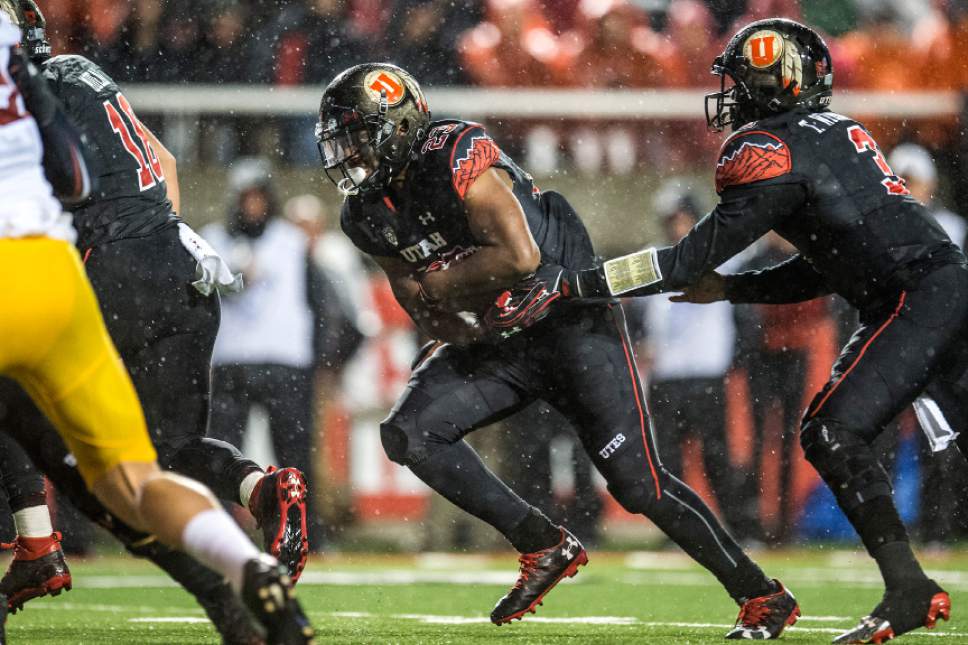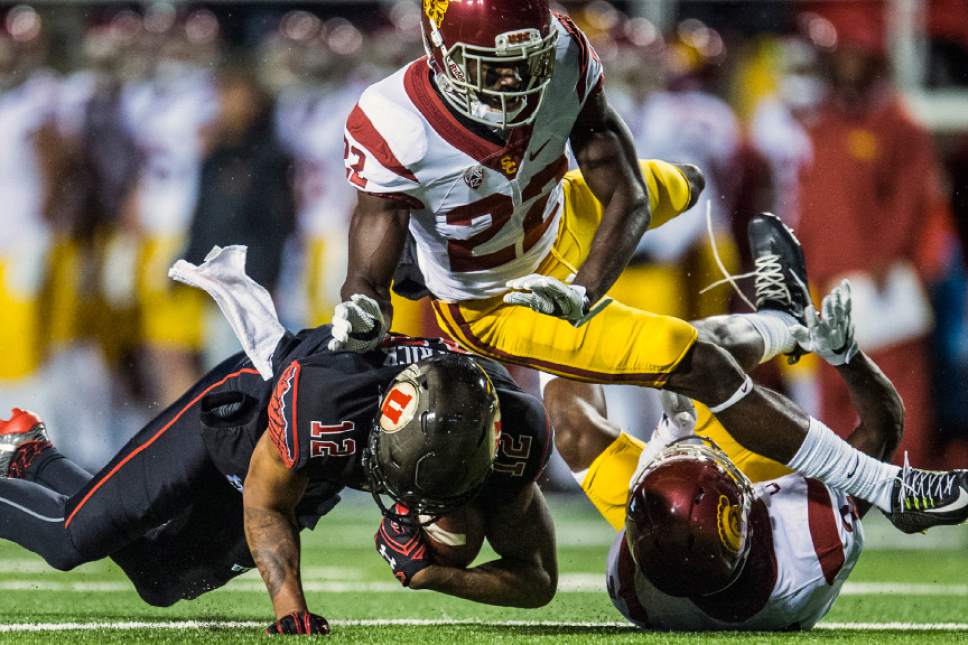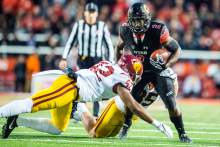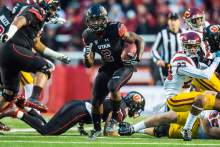This is an archived article that was published on sltrib.com in 2016, and information in the article may be outdated. It is provided only for personal research purposes and may not be reprinted.
One of the best feelings an offense can have is standing on the field on fourth down, and not seeing a punter or kicker trotting out.
Before suffering a season-ending injury last weekend, senior center J.J. Dielman explained going for fourth down against USC it thusly: "I knew that's how the game was going. They're going to call on us to get this yard. And yeah, when they don't even look around and they just call the next play, it makes the O-line feel cool because they have confidence in what we're doing. "
The past two games have gone that way for Utah, which has encountered nine 4th downs with less than two yards to go, and gone for it every time. Utah is 9 for 10 on the season on fourth down, tied for 6th-best in the nation in percentage, behind only the five teams that have converted every opportunity.
Coach Kyle Whittingham called it "uncanny" how many times 4th-and-short situations have cropped up in the last two games. But he hasn't balked from going for it. And according to Whittingham, coaches and players, it typically comes down to a decision in the moment.
"More than anything, it's a gut feeling," Whittingham said. "Most of it depends on how the game has gone in the line of scrimmage in 4th and shorts. If we're controlling the line of scrimmage and not allowing penetration, allowing very few negative plays, you're good to go. If there's guys in your backfield, if you're blowing assignments, then not so much."
It may feel like Whittingham has gone for it more than in seasons past, and that's definitely true in the last two games by number of sheer occurences. But even last season, the Utes attempted 24 conversions on 4th downs, and were successful 16 times ranking No. 14 in the country.
Though Utah didn't attempt four conversions in any one game last year, the offense is basically on last year's pace.
"That just shows the trust he puts in the offense," senior receiver Tim Patrick said. "We just gotta keep showing the coaches that."
Utah has run all 10 times on 4th down, only coming up short in the last run against Cal. It's worth noting that after going 0 for 2 on 4th down last year against USC, the Utes were 4 for 4 in the home game this season.
While part of that is being "aggressive," —http://bit.ly/2dKKVid";> a concept that seems to be at the forefront of Whittingham's mind this year — he also expressed confidence in the offensive line and running backs he has this season.
Offensive co-coordinator Jim Harding said the Utes work on their 4th down plays earlier in the week, around Tuesday or Wednesday in practice. Before any given drive, Utah typically has a good idea whether it will go for it on 4th and short, and then they'll implement the plays they practiced that week.
It's not completely an emotional call. The Utes did kick a field goal facing 4th and short in week two against BYU, a game in which they didn't attempt to run an offensive play on any 4th down situation. In that instance, Whittingham cited figures the Utes use from an analytics company that swayed him to take the points at the BYU 7 yard-line.
"Regardless of what we think we can do, he's obviously the one that's got the final say," Harding said. "I'm not interested in going for it just to say we go for it. I want to make sure it's a calculated, well thought-out decision."
It's interesting, then, that playing from behind on Saturday against Cal, the Utes went for it on 4th and inches from the Cal 10 — the only conversion they've missed this year. The situation was different: Cal has a higher-scoring offense, there was more time, and the Utes were trying to bridge a deficit. But the decision cost Utah a chance to win with a field goal at the end of the game.
A study from http://www.advancedfootballanalytics.com/index.php/home/research/game-strategy/120-4th-down-study";>Advanced Football Analytics that graphed expected points against the down and field position of the ball seemingly validates Whittingham's decision, even if it didn't turn out well. Kicking a field goal would've had an expected point value of just over 2 points, while going for it had an expected point value of just over 3 points.
Of course, that's not how the play went: Zack Moss was taken down for a loss, and http://bit.ly/2cJxi5V";>Cal went on to win the game at the end of the quarter. Still, Whittingham expressed no regret. Neither did his players.
"Anytime we have 4th and 1," Patrick said, "I'm all in to going for it."
kgoon@sltrib.com
Twitter: @kylegoon









